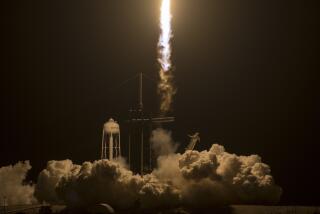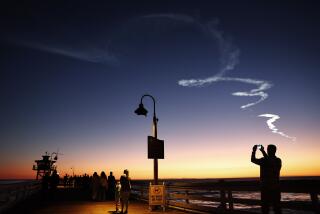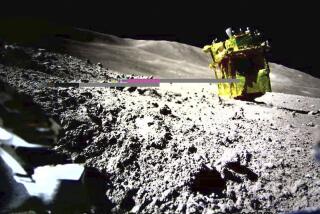1-ton satellite fell to Earth on Sunday, crashed into South Atlantic
- Share via
A 1-ton satellite fell through Earth’s atmosphere on Sunday, but don’t worry. Nobody got hurt.
The car-sized satellite entered the Earth’s atmosphere at 4:16 p.m. PST, above the Falkland Islands off the coast of Patagonia, according to a report from the European Space Agency.
Most of the satellite burned up in the Earth’s atmosphere, as the ESA had predicted, but 25% of it did hit the Earth’s surface -- plunging into the southernmost regions of the South Atlantic.
The (ESA) said it will release more information about the satellite’s reentry as it becomes available and we’ll update this post as well.
PHOTOS: Amazing images from space
The satellite, known as GOCE, was launched in 2009 to map the variations in the Earth’s gravity in unprecedented detail. GOCE data also helped scientists create the first high-resolution map of the boundary between the Earth’s crust and its mantle -- an area called the MOHO.
GOCE’s mission was supposed to end in August 2011, but the satellite did not consume as much fuel as the ESA expected, so its mission was extended. The ESA decided to lower its orbit a bit so it could get even more detailed information about small ocean features.
On Oct. 21, GOCE ran out of fuel and began to descend to Earth.
Although a 1-ton satellite spiraling toward Earth may sound dramatic, Heiner Klinkrad, head of the ESA’s Space Debris Office said it’s actually not so unusual. In a statement, he said that 100 to 150 tons of man-made space objects re-enter the Earth’s atmosphere every year. And in 56 years of spaceflight, no one has been hurt by this falling space debris yet.
Interested in things falling from the sky? So am I. Follow me on Twitter
ALSO:
Found: A never-before-seen asteroid with six comet-like tails
600,000 bats killed at wind energy facilities in 2012, study says
Oldest air in the world may be trapped deep in the Antarctic ice sheet







